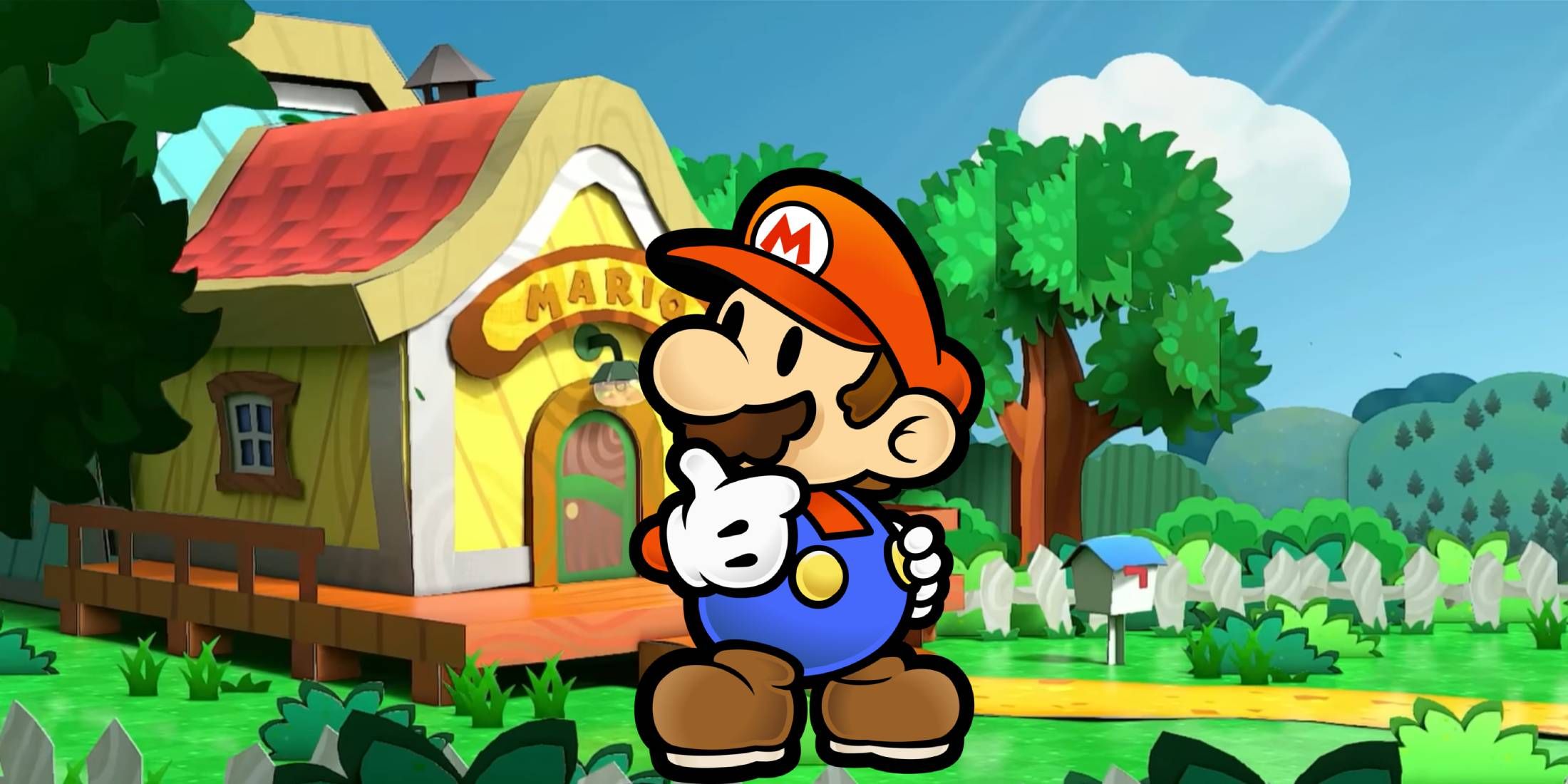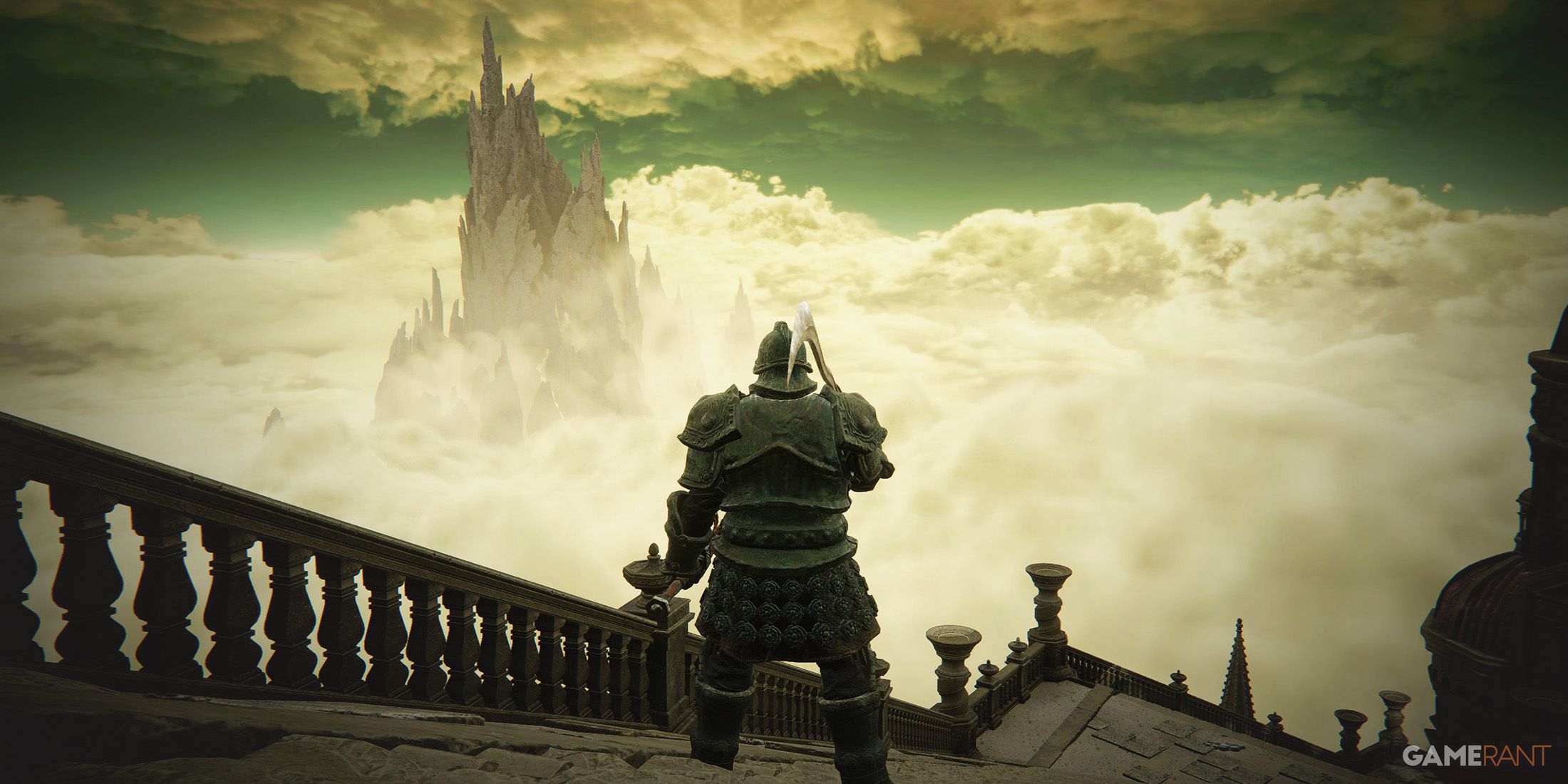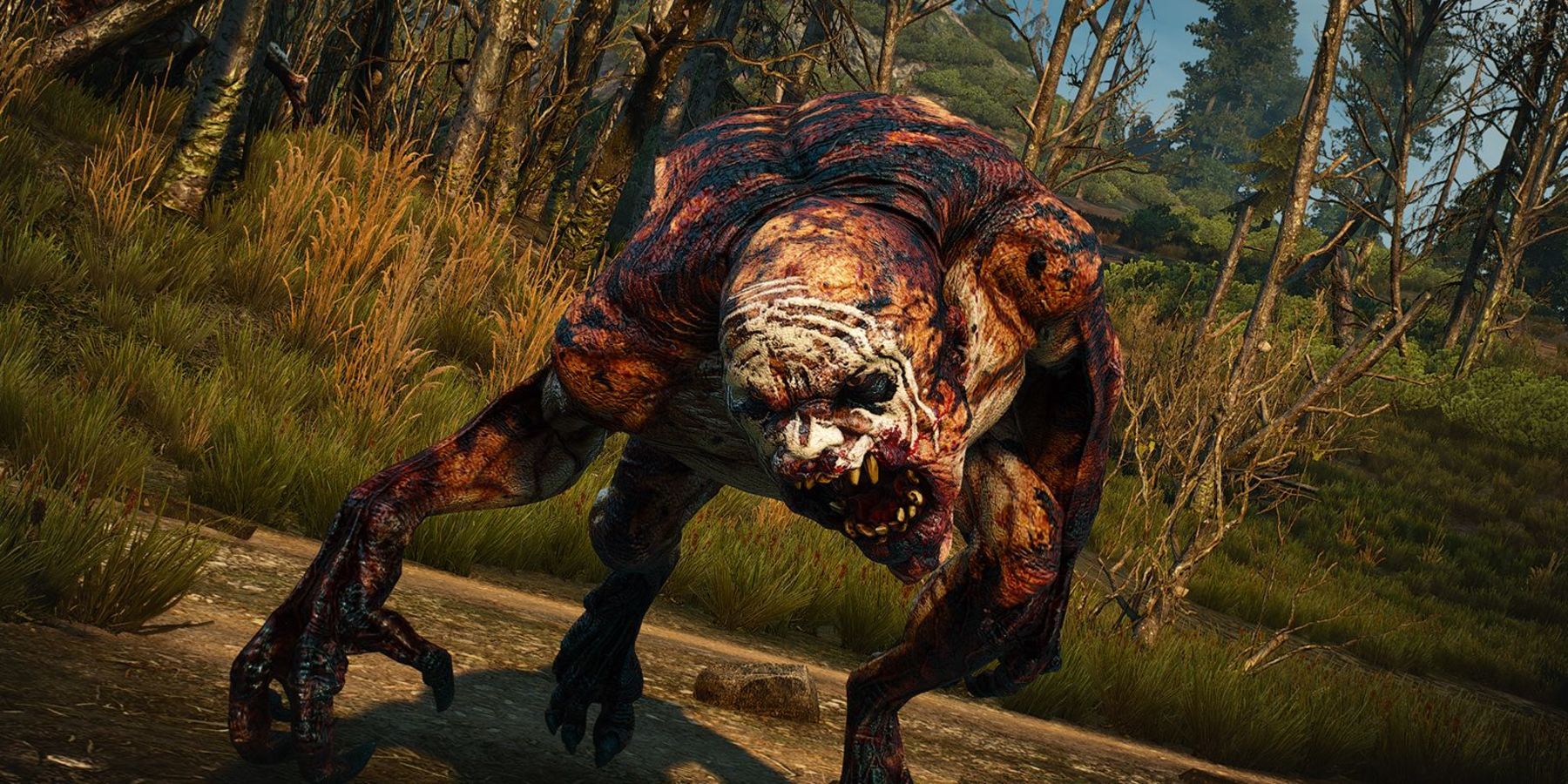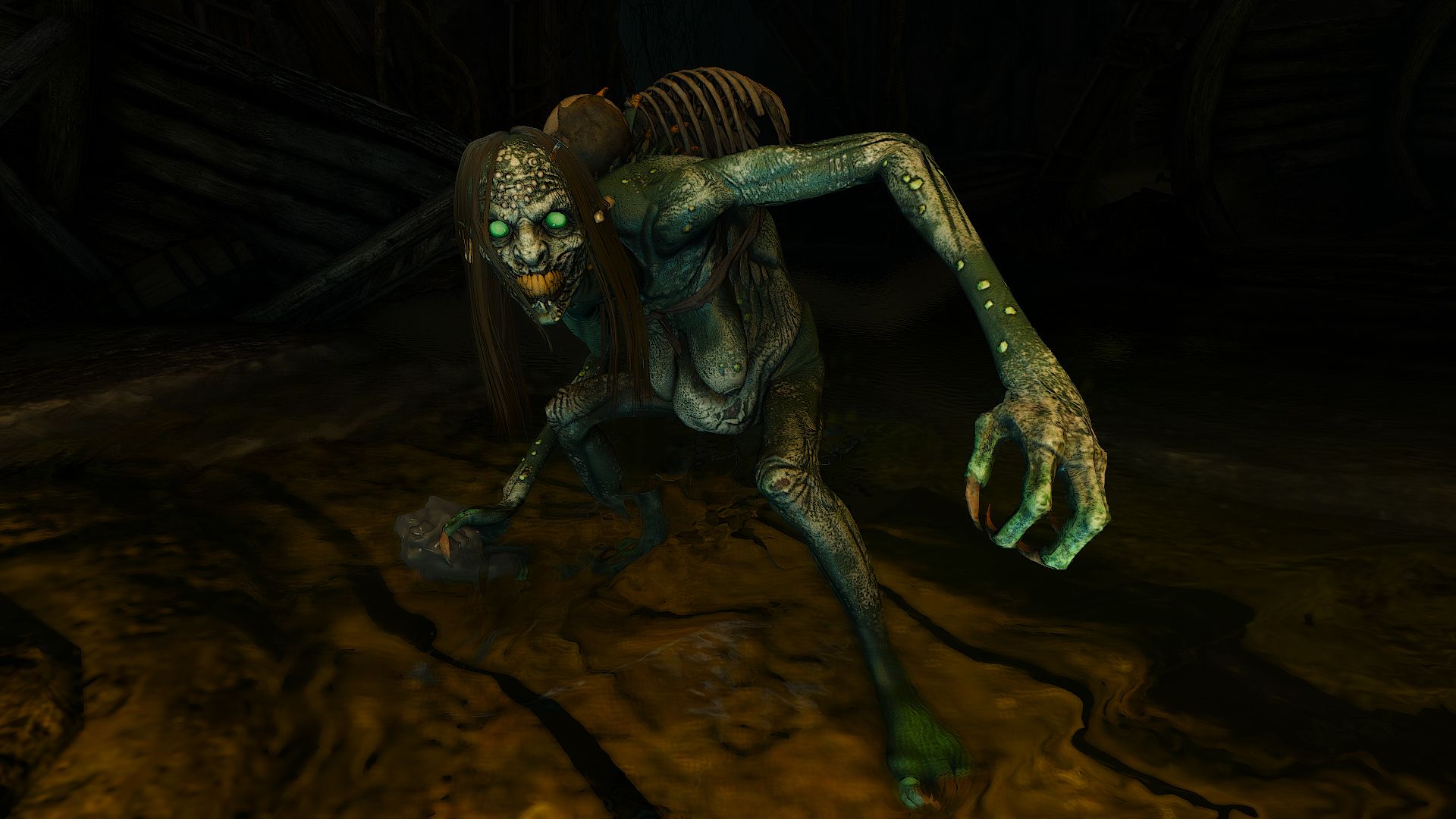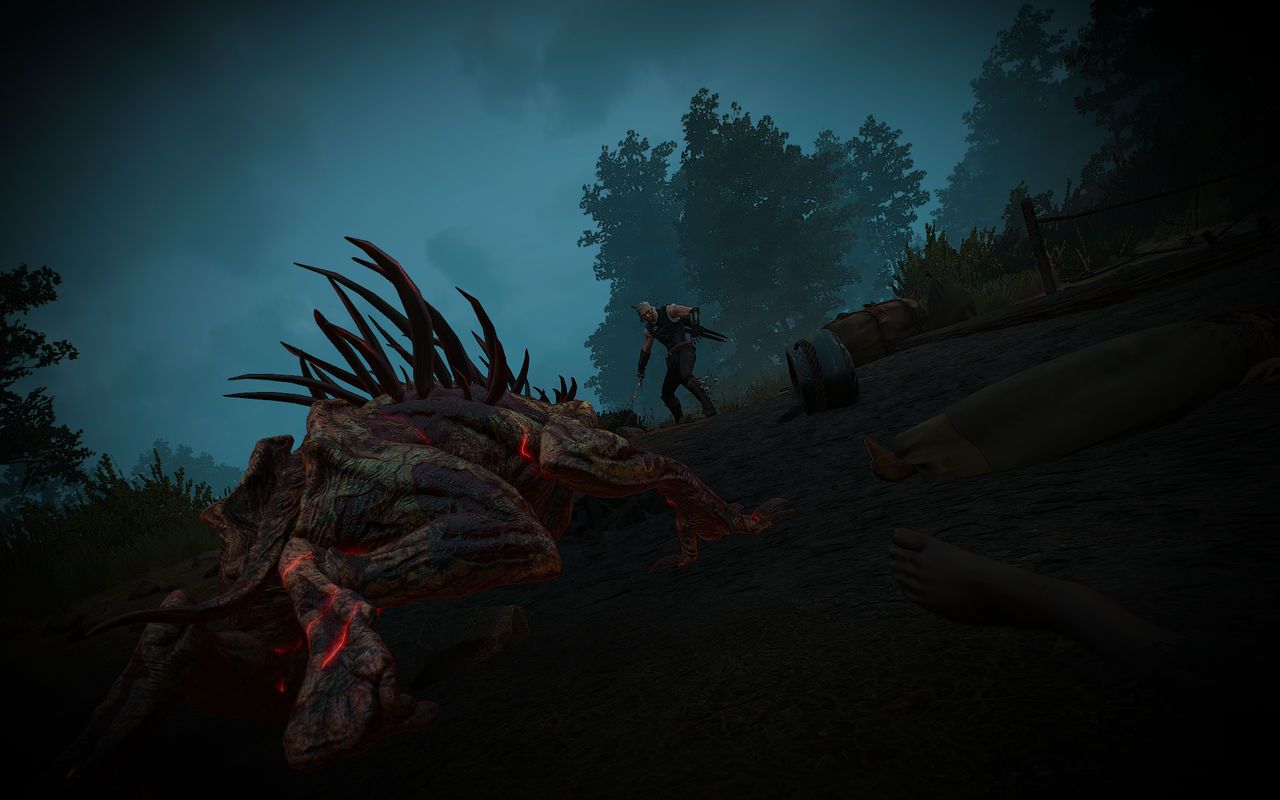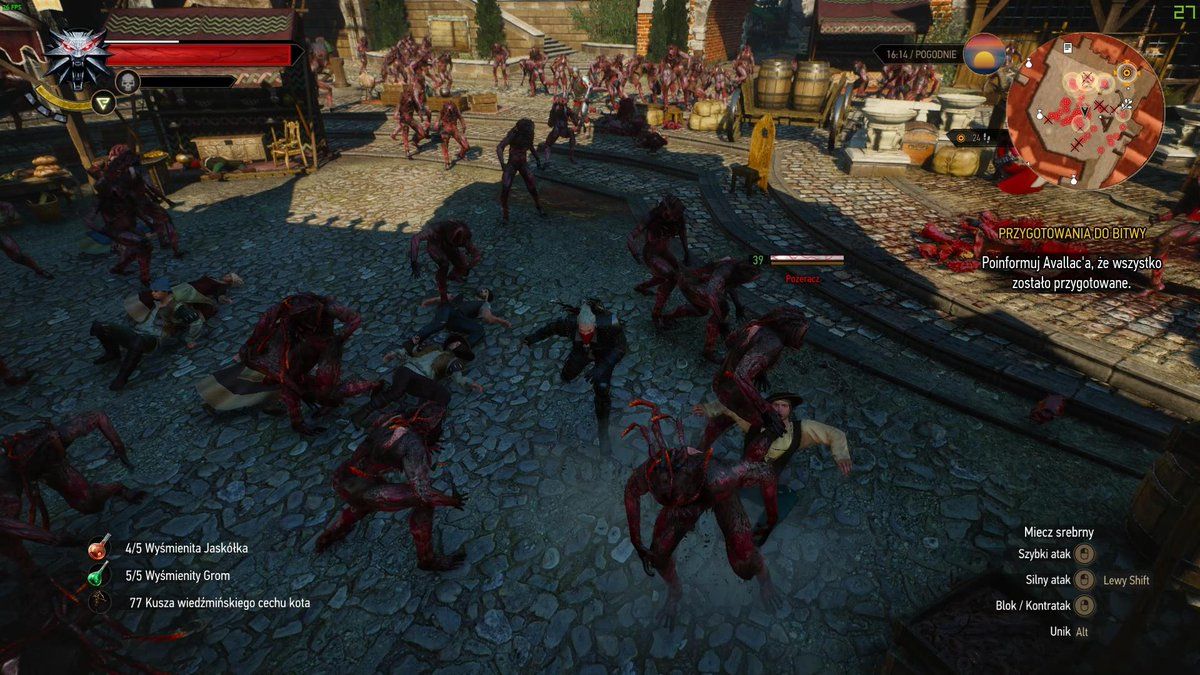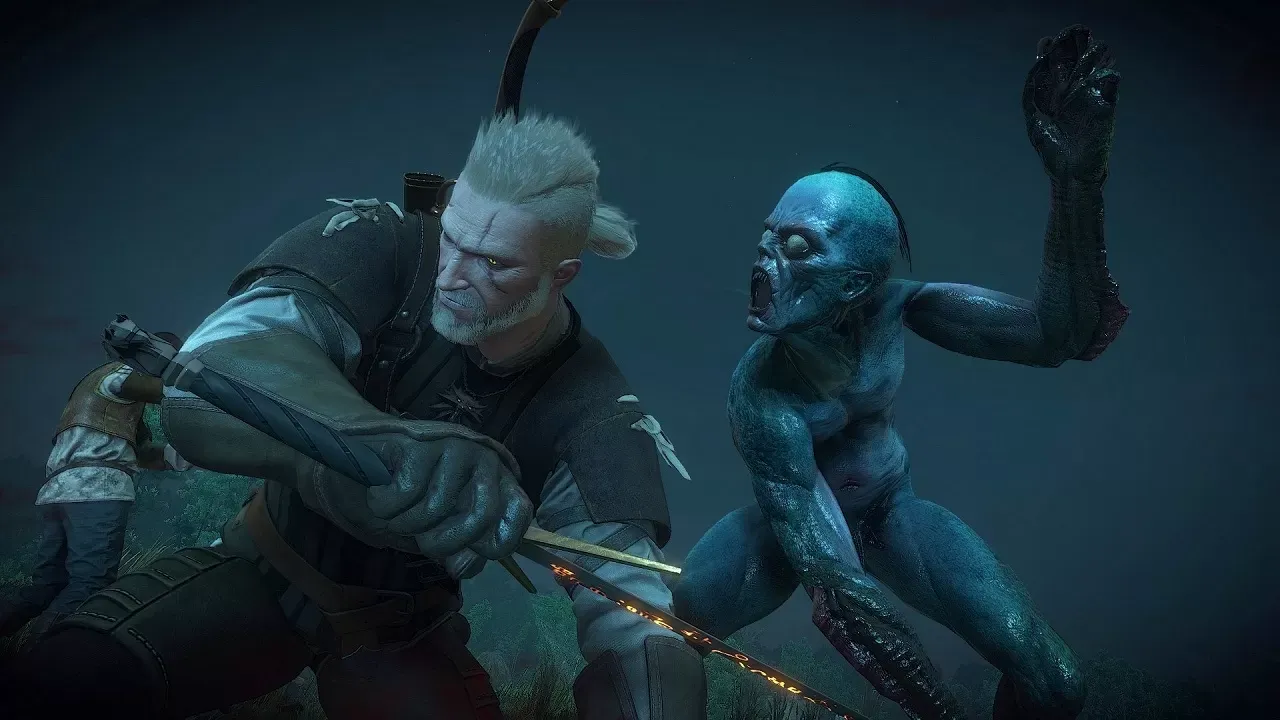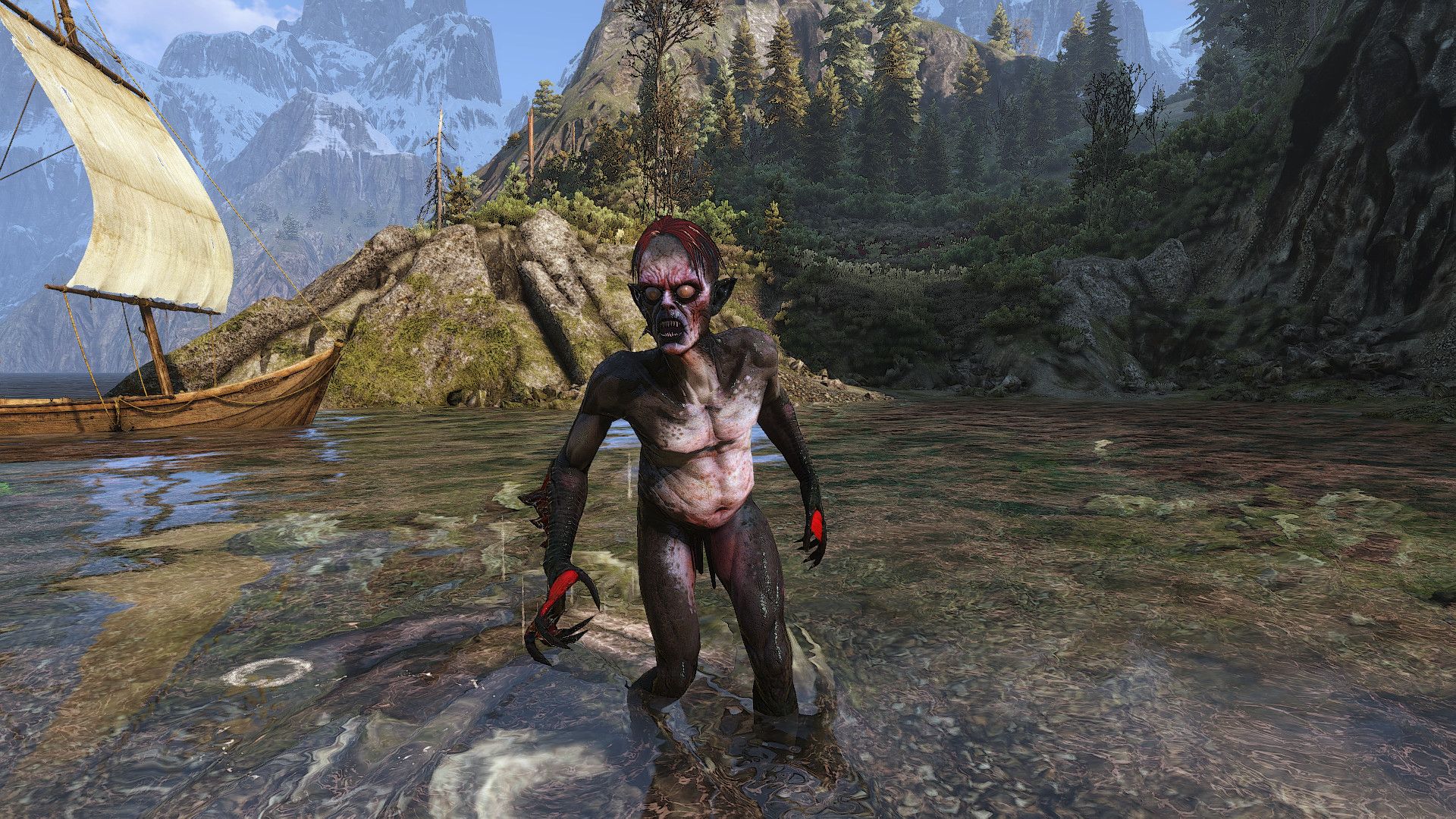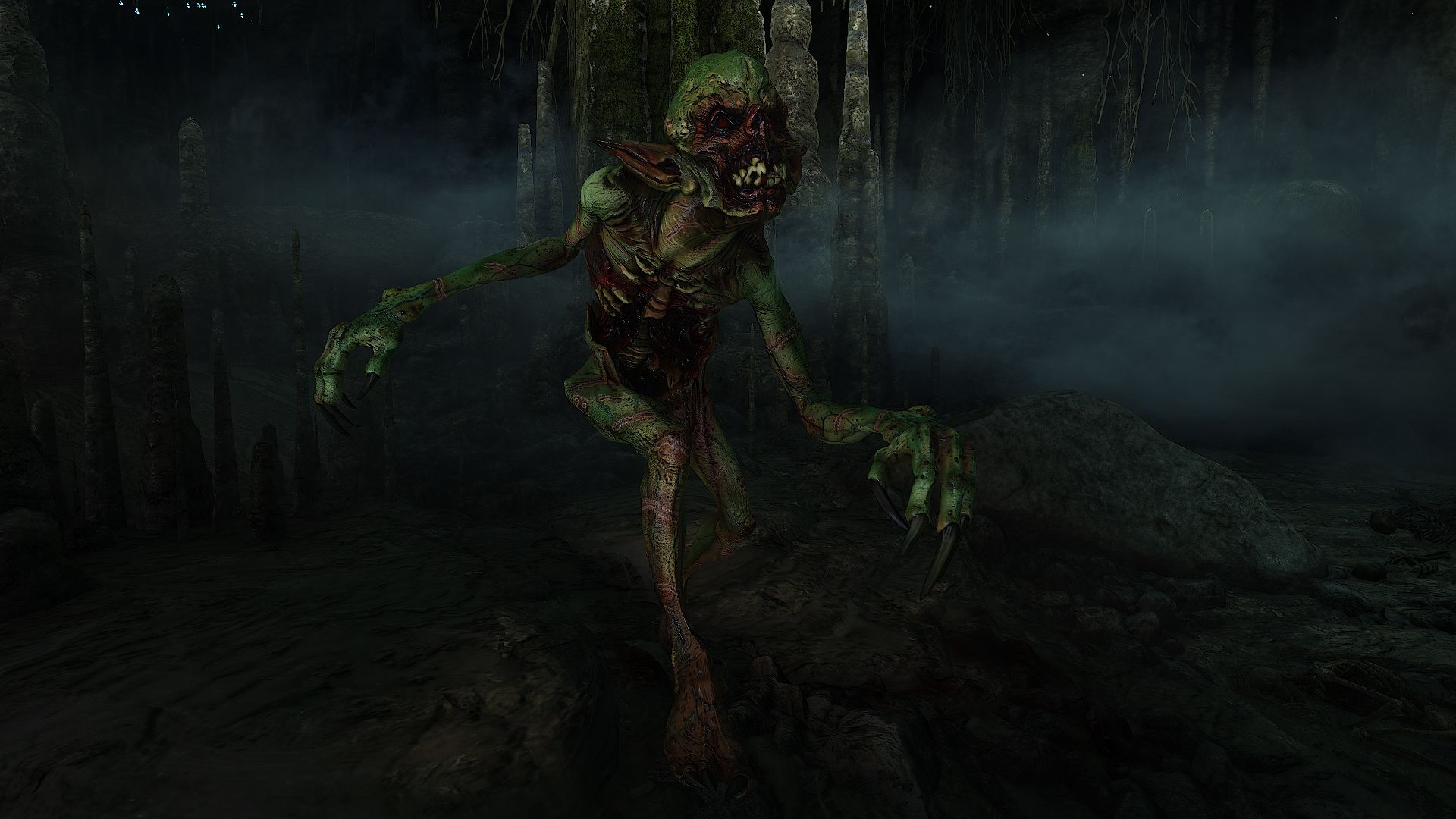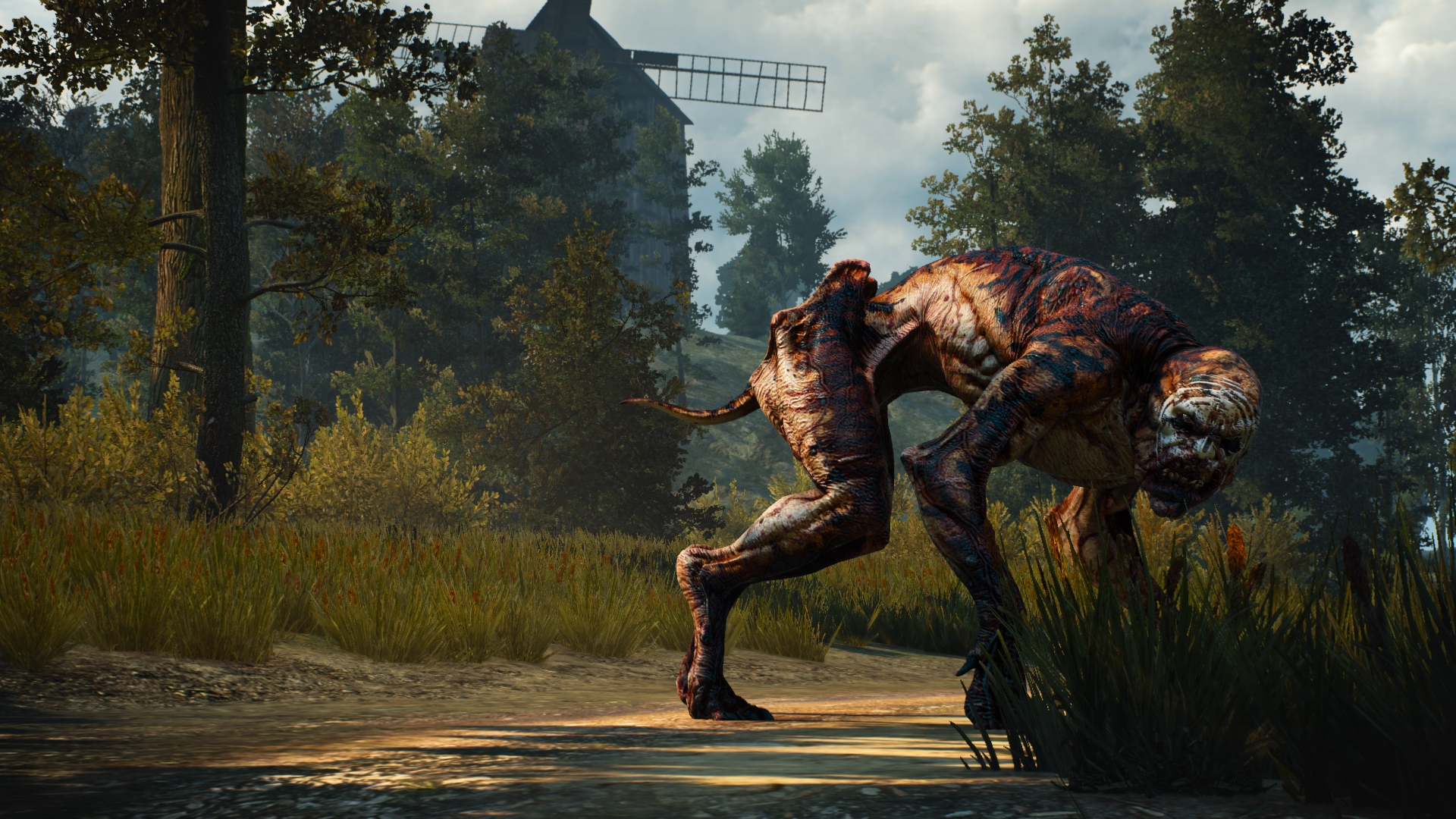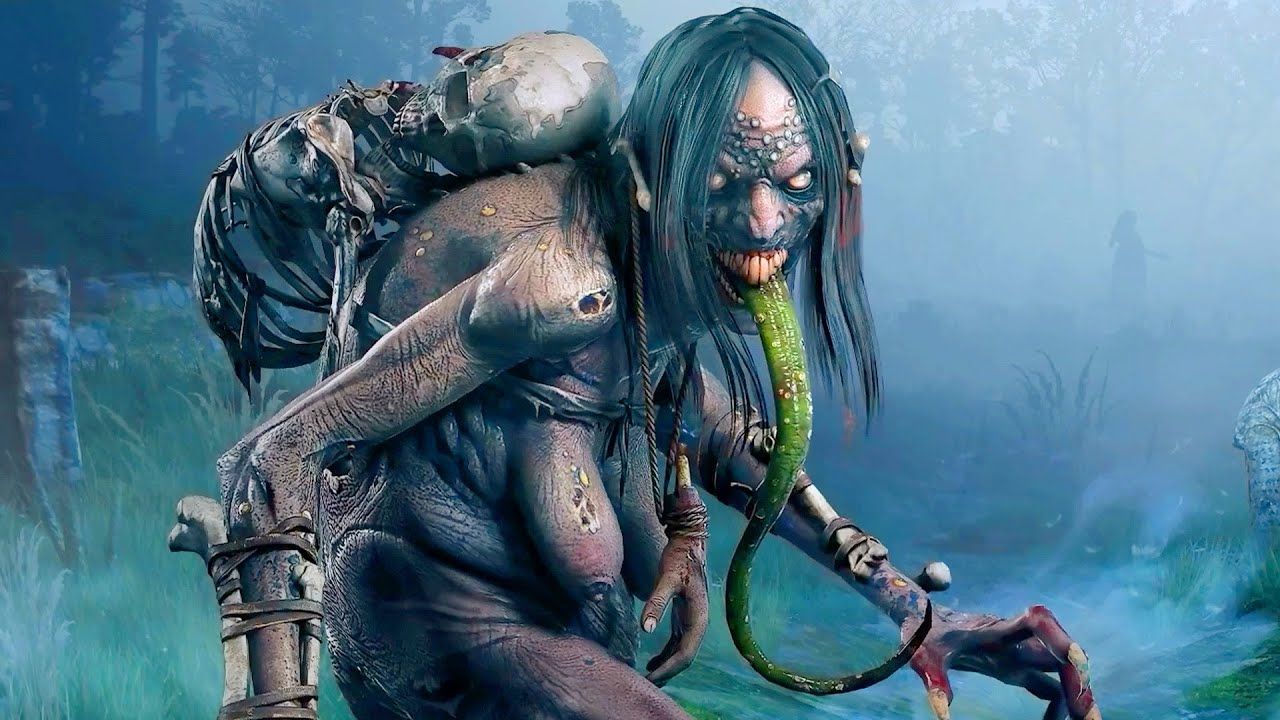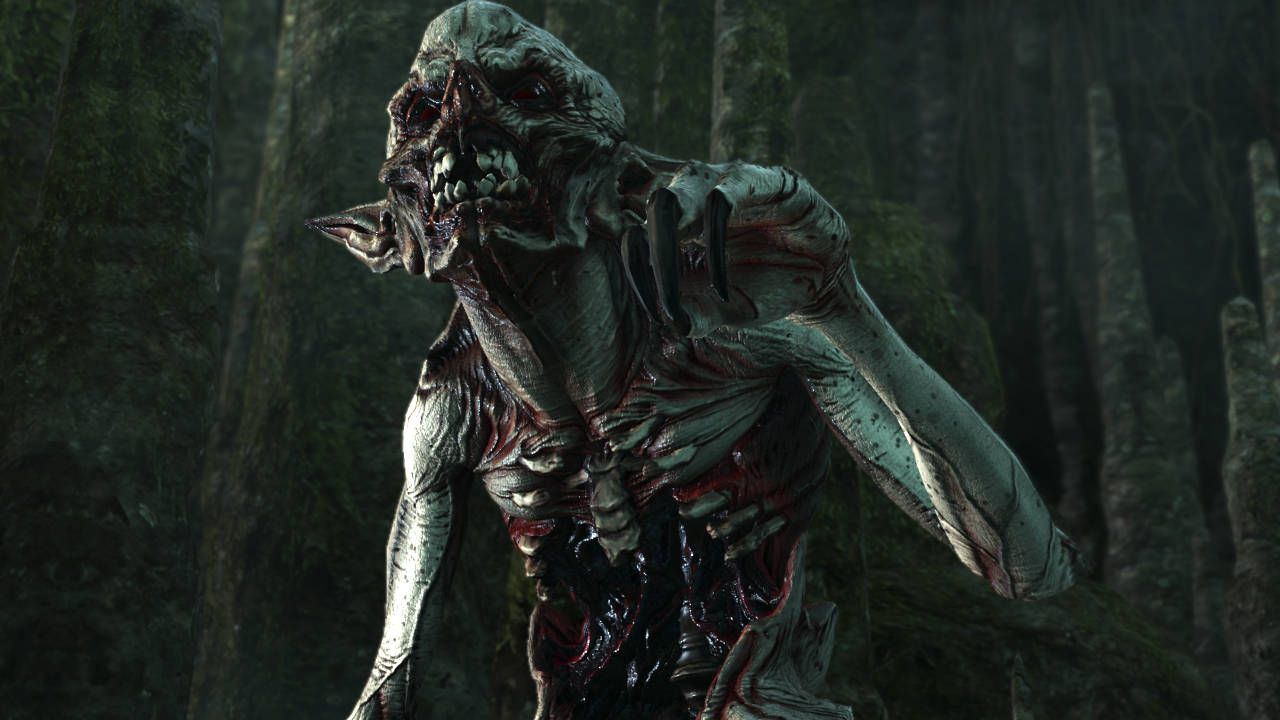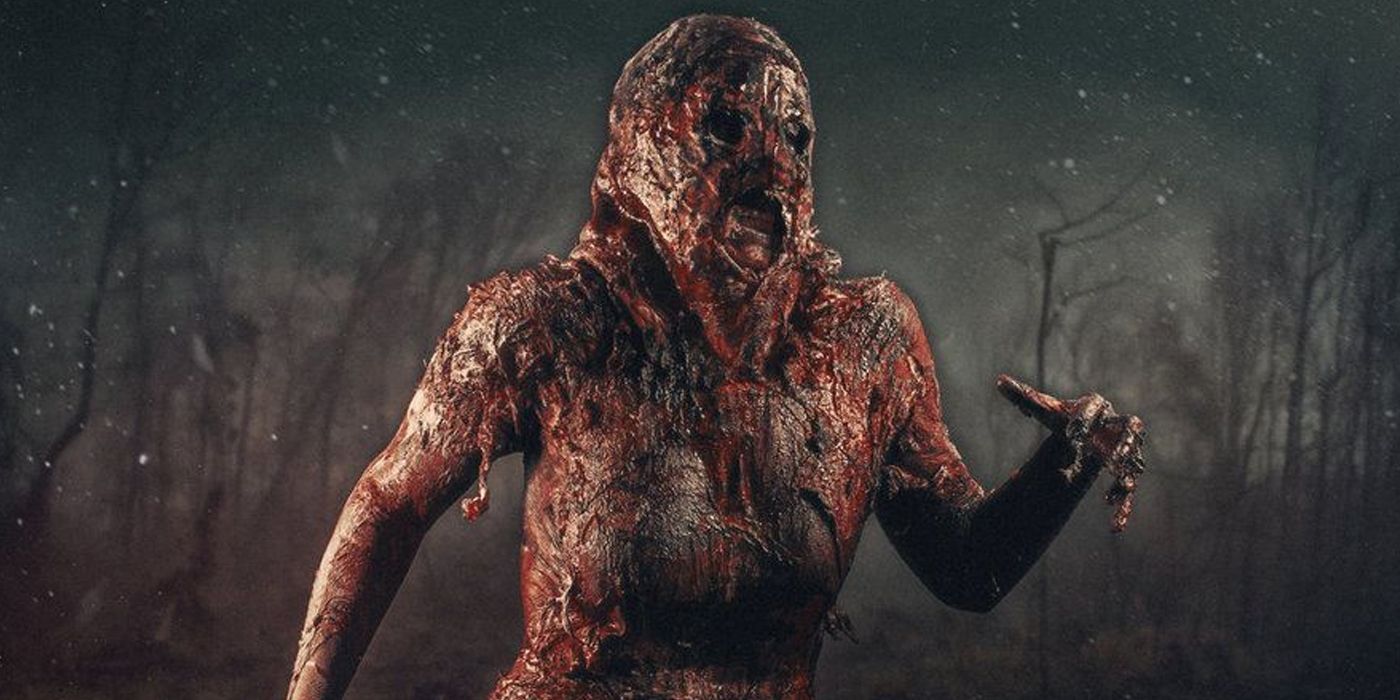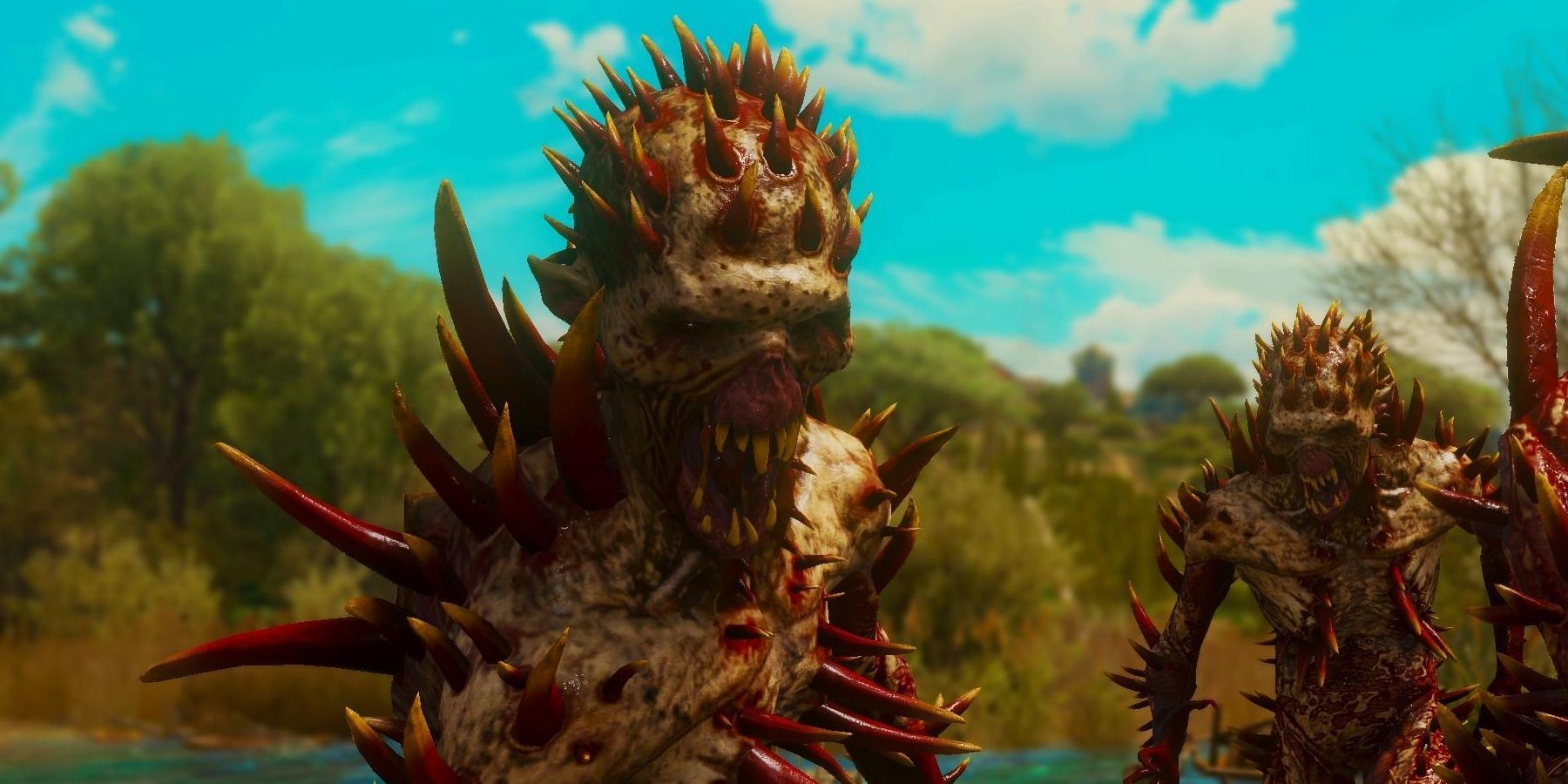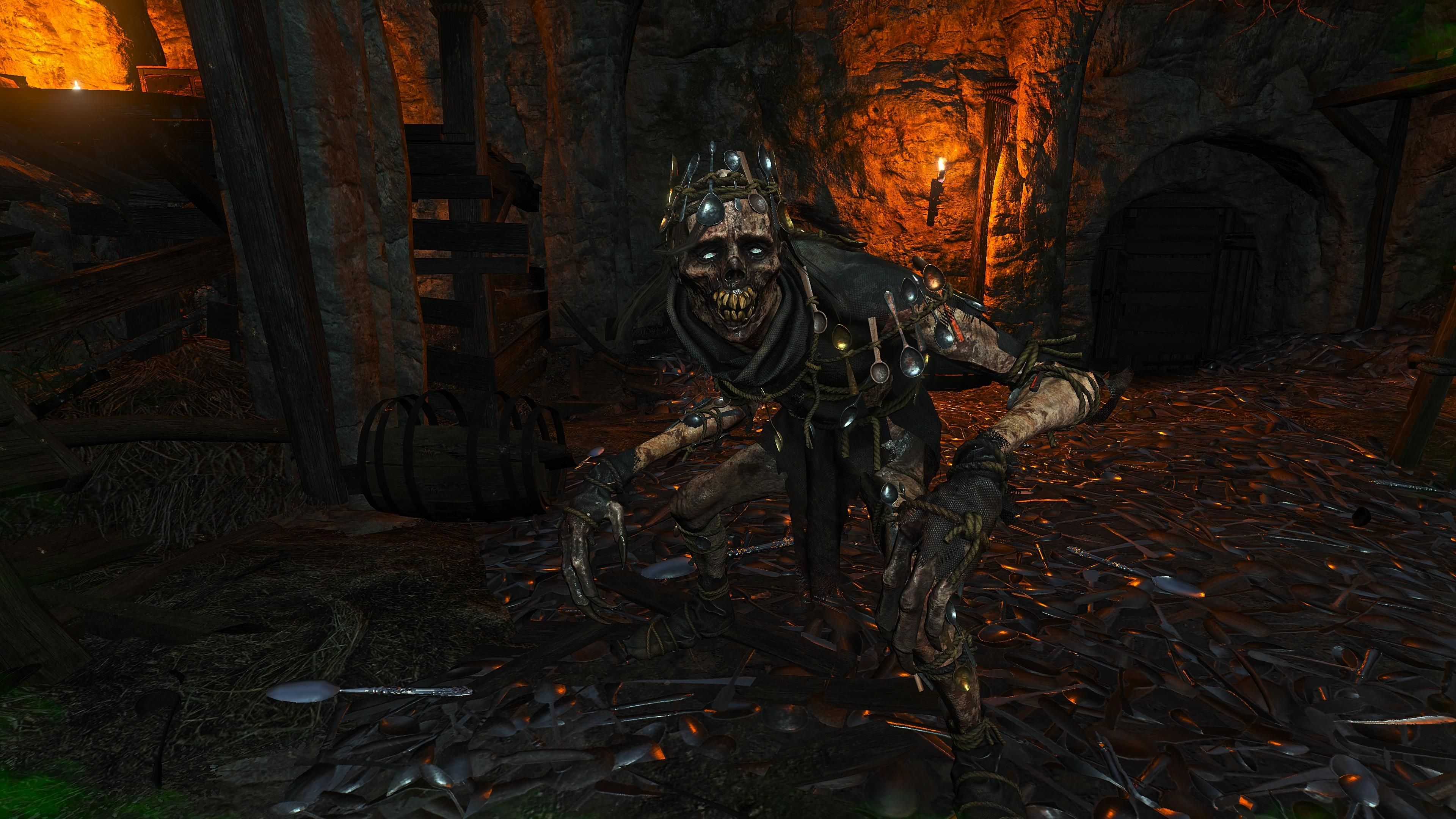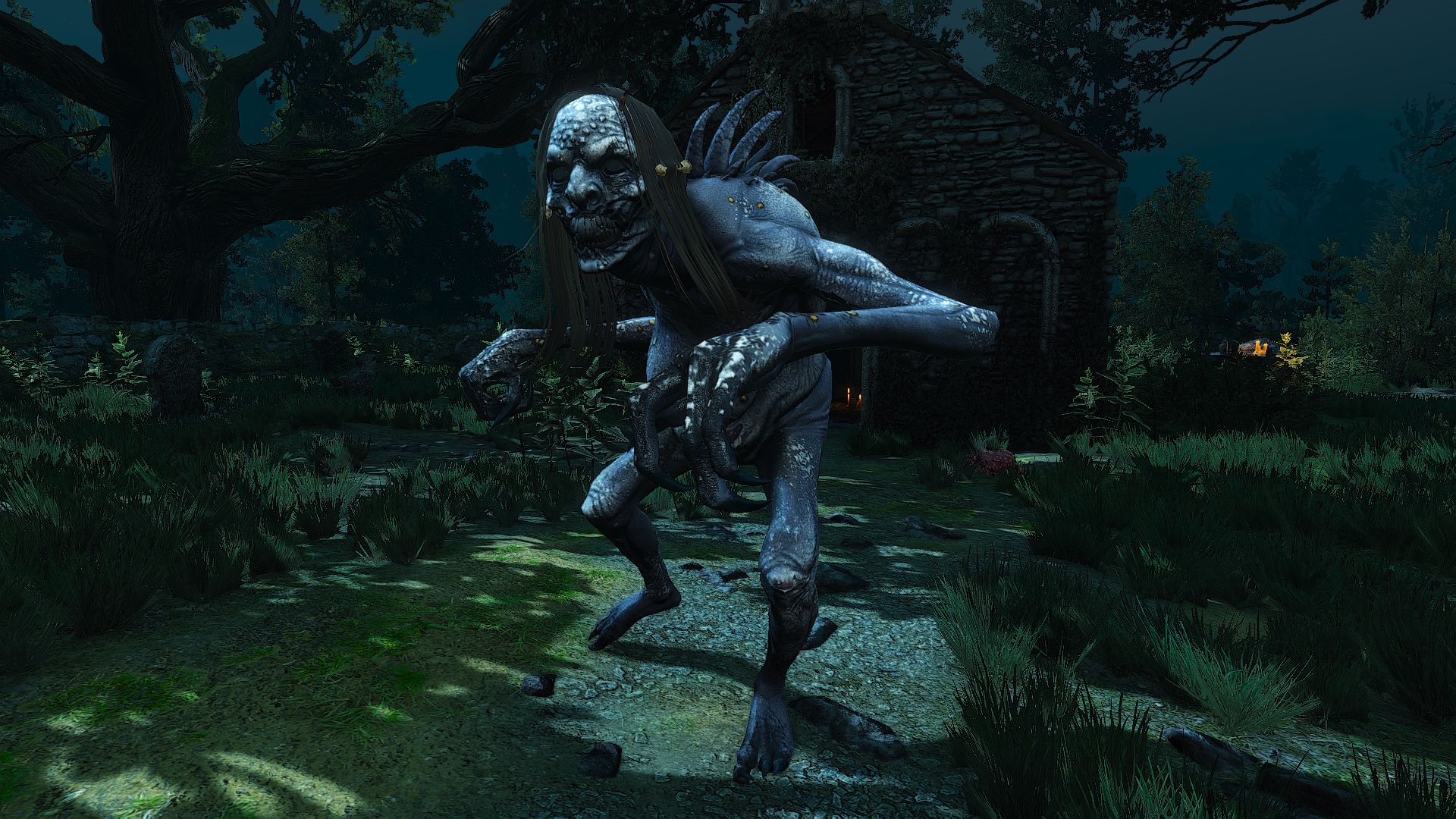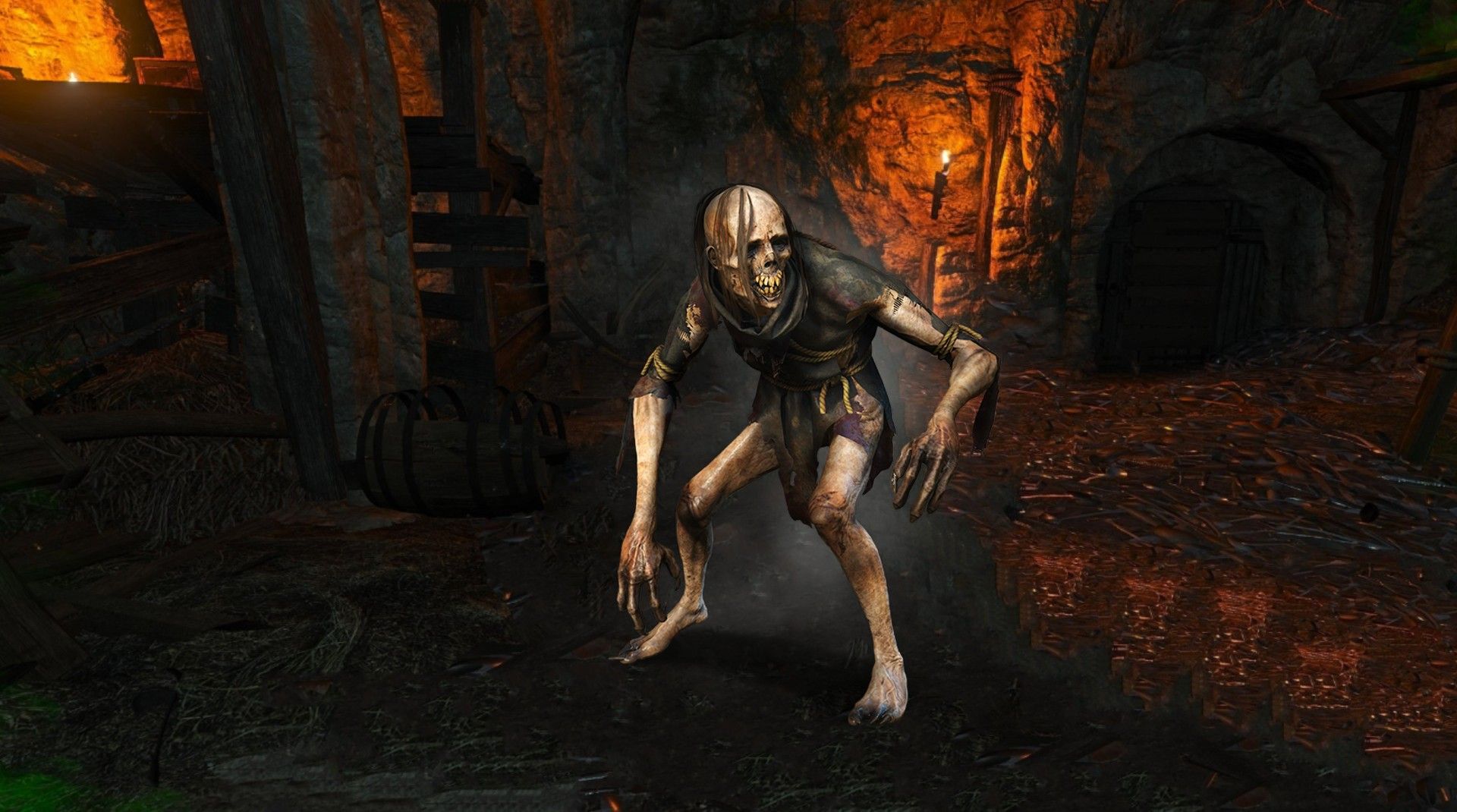Necrophages are some of the most terrifying creatures Geralt will face in The Witcher 3: Wild Hunt. They live near cemeteries, gravesites, swamps, and city sewers, and whoever witnesses an infestation of these creatures must call a Witcher to kill them and destroy their nests.
In The Witcher 3: Wild Hunt, Necrophages come in many forms, and usually, they are not alone; they hunt in groups of different individuals, and knowing their weaknesses and strengths, while also using the right tools, is the key to defeating them.
Abaya
Abaya is a powerful Water Hag situated in the bay beneath Kaer Trolde, in Skellige. Geralt will face this creature during the "Muire D'yaeblen" contract. This particular type of Water Hag has powerful claws able to demolish any attempt to block or evade and the ability to blind opponents from a distance, then strike with a lightning-quick counterattack. The Witcher's signs are helpful against Abaya since Yrden can slow her, and Quen can protect the Witcher from her blows. In addition, she is vulnerable to Necrophage oil and Northern Wind.
Alghouls
Alghouls are particularly large Ghouls that are fattened and crave warm meat. They prefer to kill their victims because they love to prepare their meals instead of simply eating them. They can be found in battlefields or anywhere where many corpses can be found in shallow graves or left out to rot. Geralt will have to face them during two contracts.
Alghouls differ in size, strength, coloring, and intelligence from normal Ghouls. Ghouls are primitive creatures unable to plan the simplest ambush, although Alghouls can think and are much more dangerous. They usually move in packs terrorizing anything on their path, and prefer to hunt during the night when their strength is doubled.
During The Witcher 3's combat, Alghouls try risky maneuvers to knock their opponents to the ground so the other can finish their job, tearing them to shreds. They can emit a piercing scream to stun nearby victims, as well as send nearby Ghouls into a raging frenzy. Alghouls are vulnerable to Axii and Necrophage oil.
Devourers
Devourers can derive from a tale of Baba Yaga in which a man happened upon a Devourer. The story was softened since it provides only a faint idea of what can happen to someone who should have the misfortune of passing near a Devourer's liar.
Devourers can usually be found with Rotfiends, so it is crucial to plan an excellent strategy to beat them. Quen helps guard against their attacks, as well as Necrophage oil. However, they explode when their health reaches a certain level, so an experienced Witcher knows that he has to step back.
Drowners
Drowners inhabit both natural and artificial bodies of water, from rivers and lakes to mill ponds and city sewers. Legends say these creatures are drowned men, somehow arising from the dead to kill the living; however, this belief is false, as they are another post-conjunction creature. They are often seen as some of the worst designed The Witcher 3 monsters.
Cowardly creatures by nature, Drowners usually stick to eating scraps they dig out of rubbish piles and animal carcasses and, since they are not the mightiest beasts in the world, they hunt in groups. They are surprisingly fast on land but only threaten fishermen and washerwomen. As they are already dead, Drowners do not fear poisons or blood loss; however, they can be killed with fire and Necrophage oil.
Drowned Dead
Drowned Dead are irredeemable criminals who end their lives in the waters of Lake Vizima. They are found in Kaer Morhen, Novigrad, Skellige, and Velen. They are a hazardous variety of Drowners and attack in groups. They are immune to bleeding, blinding, and poison attempts but are sensitive to silver and fire.
Foglets
Foglets are magical creatures said to have arrived during the Conjunction of the Spheres. They are found in swamps, forests, or the mountains and lure their prey into magic traps. They have glowing eyes and mouths, keen ears, and long pointed fingers. Foglets can appear wherever thick fogs arise, and if there isn't any, they can create or summon it themselves. By manipulating fog, they can separate travelers from each other and hide trails.
When fighting Foglets, a Witcher must remain calm and know that they can turn invisible and create illusions of other Foglets. Signs and bombs are essential when they turn invisible; otherwise, they cannot be harmed.
Ghouls
Ghouls are the most common corpse-eaters that live in nests and usually roam around in packs. For a Ghoul, a living human is a raw material that must be processed before becoming a meal. The human corpse should be left to age, shredded to pieces with fangs and claws.
In part, Ghouls resemble humans, yet on the whole, they are the utter negation of all that is human. Though they have arms and legs, they walk on all fours like dogs. They are driven by one thing only: an insatiable craving for human flesh. Ghouls usually feed in small groups, and they appear near crypts, catacombs, and battlefields. A key strategy to fight a group of Ghouls is to keep moving around until one gets separated and then attack with a silver sword coated with Necrophage oil.
Grave Hags
Grave Hags resemble aged, deformed women, are territorial creatures, and loiter near graveyards and battlefields. Their lairs resemble human homes and are built near burial sites in Velen and Skellige.
Grave Hags feed on human corpses and, in particular, on the rotten marrow which they slurp from human bones using their long, prehensile tongues. Once they have devoured all bodies within reach, they turn to killing men and burying them in the cemetery as they wait for them to decompose.
Grave Hags are aggressive when provoked, using their incredible speed to close on prey rapidly. Their tongue can surprise even veteran Witchers with the speed and range it can lash out. Being struck by it can cause temporary blindness, leaving the victims unable to defend themselves properly. In addition, Grave Hags are vulnerable to black blood, Necrophage oil, Yrden, and Quen.
Ignis Fatuus
Ignis Fatuus is an ancient and powerful Foglet in The Witcher 3: Wild Hunt living in a cave located in Velen. This ancient Foglet proved particularly adept in the art of forming illusions. Only a professional monster slayer skilled with Signs and swords could beat such a foe. Geralt will face this creature during the "Swamp Thing" contract.
Blows dealt by Foglets of such an age carry so much power that blocking them is out of the question. This Foglet possesses the ability to move extremely quickly, and not even Yrden can slow it down. Furthermore, it can meld completely into the mist, then suddenly rematerialize to strike from behind.
Rotfiends
Rotfiends are Necrophages that resemble decomposing human bodies that have been stripped of their skin. The overwhelming stench of rot gives away their presence. Rotfiends were once rarities, but they have become a veritable plague, particularly around battlefields in Velen, White Orchard, Skellige, and Toussaint.
Rotfiends usually feed in large groups, and their decomposing bodies are filled with poisonous gasses even to those who are immune to most toxins. These emissions are also highly flammable, meaning that any spark or the cast of the sign Igni can lead to an explosion.
These creatures are hazardous and are not easy to defeat; they can become immune to any damage while they are about to explode, causing damage to the ground and other nearby foes. An experienced Witcher knows that the only chance to kill them is to be strategic and use a sword coated in Necrophage oil.
Scurvers
Scurvers are monsters similar to Rotfiends but covered in needles that fly everywhere when they explode. They are found in the Blood and Wine expansion in the Toussaint region and can be faced during the "La Cage au Fou" quest.
Scurvers, which feed on old, rotting corpses, prefer to make their hunting grounds in abandoned torture sites, forgotten graveyards, and ancient battlefields. They are very aggressive, and though they feed on carcasses, they are likely to attack if they come across a living person. Thus, when wandering near any of the places mentioned above, one must be especially cautious.
Scurvers fight similarly to a Rotfiends, except at the very end when a final hit causes them to stop attacking, freezing up as they get ready to explode. Like all Necrophages, they are sensitive to Necrophage oil.
Spotted Wight
Spotted Wights were a subspecies of Wight which Witchers drove to extinction, appearing in the Blood and Wine expansion. They were larger and owned their names to their numerous flaws and effusions. Spotted Wights would most often dwell in derelict cemeteries and empty wildernesses, yet at times took to living in abandoned human domiciles.
When undisturbed, they will not act aggressively, however they became very dangerous if threatened. In the colder months or when faced with an unseasonable chill, they slip into a state of lethargy, making them easy targets. Even during their active periods, the Witchers can find a surefire way of besting them, which is based on the careful casting of the sign Yrden and Igni.
Water Hags
Water Hags dwell near shallow streams, rivers, and wetlands. They are found in Velen, Skellige, and White Orchard. Though bulky, they are excellent swimmers. They can even swim through thick mud with astonishing agility, surfacing beside their victims to attack them with their sickle-shaped claws.
Water Hags can also form mud into balls, which they toss to temporarily blind opponents. They are particularly active and dangerous during rainstorms, which hinder the sign Igni, usually the most effective weapon against all moisture-loving creatures. Water Hags have been known to work alongside Drowners, making these ancient Hags some of the most dangerous monsters. In these situations, it may help to carry Dragon's Dream bombs.
Wights
Wights are monsters found in deserts and cemeteries in the warm season, and they are only dangerous when confronted in the vicinity of their habitat. Wights spend the winter months in a state of lethargy very similar to human sleep. They live strictly solitary lives; it is practically unheard of for these creatures to appear in groups.
Though Wights are ghastly and threatening in appearance, one should not approach them with sword drawn or attack them unprovoked. Left alone, they present no danger to anyone and are far more interested in mixing noxious brews in cauldrons than in fighting. Although, they are vulnerable to the sign Axii and Necrophage oil. It is a certainty that if a Wight finds itself in trouble, it will immediately spew out an ectoplasmic solution which almost instantaneously transforms into barghests.
The Witcher 3: Wild Hunt is available now on PC, PS4, Switch, and Xbox One.

